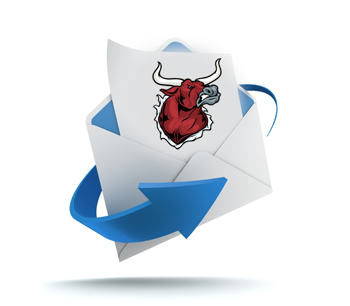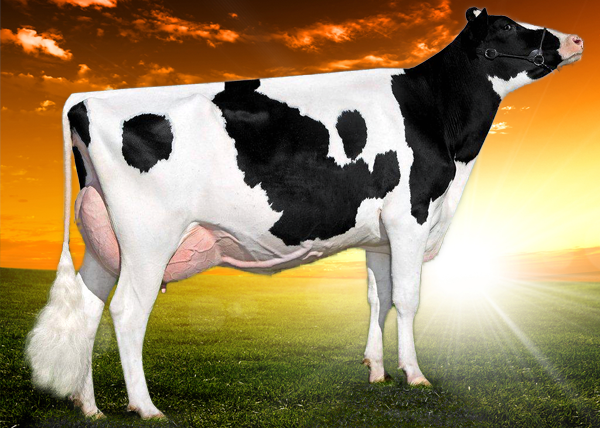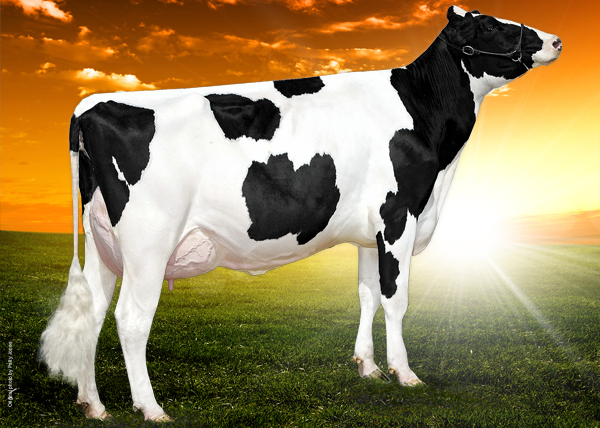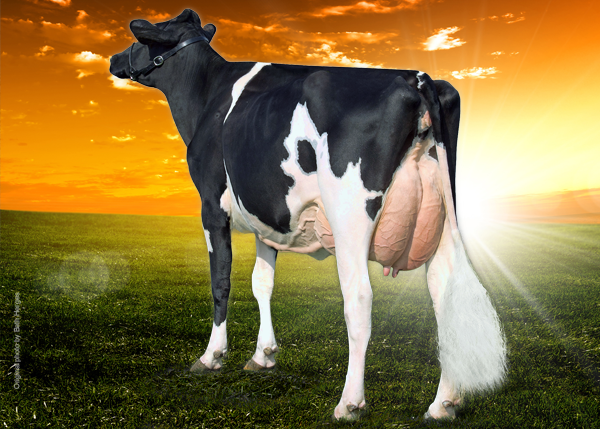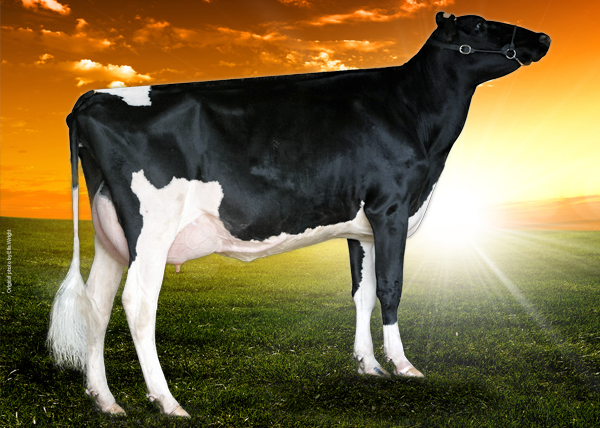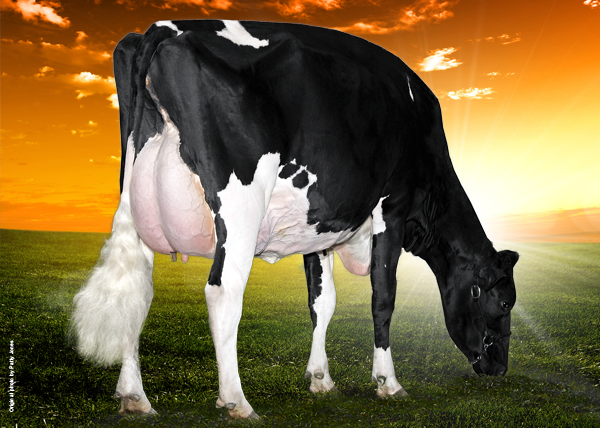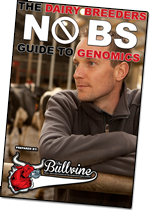Historic genetic reset slashes PTA values 20%+ while elite bulls maintain rankings – decoding April 2025’s dairy breeding revolution.
EXECUTIVE SUMMARY: The April 2025 Holstein evaluations reveal the largest genetic base change in hitstory, resetting values to 2020-born cows and slashing production PTAs (Holsteins: -750 lbs milk, -45 lbs fat, -30 lbs protein). While numerical values drop dramatically, elite bulls like GENOSOURCE CAPTAIN-ET maintain dominance through relative genetic merit. The update exposes accelerated progress but heightens inbreeding impacts, requiring revised selection thresholds for sexed/beef semen strategies. Calving traits remain in flux until August pending recalculations, while updated Net Merit indices prioritize component value and longevity. Breeders must reinterpret absolute values through this new lens to maintain genetic momentum.
KEY TAKEAWAYS:
- Recalibrate Expectations: Holstein PTAs decrease 750 lbs milk/45 lbs fat – compare percentiles, not absolutes
- Elite Stability: Top GTPI bulls like RIPCORD (3537) and DARTH VADR (3504) maintain rankings despite base change
- Economic Rebalance: New NM$ weights fat +13%, feed efficiency +41%, livability +100%
- Inbreeding Alert: Holstein PTA shifts amplified by 28% higher inbreeding rates since 2015
- Pending Data: Calving traits delayed until August – avoid major decisions in this category until fall

The April 2025 genetic evaluations for Holstein cattle reveal a transformed landscape after implementing a significant genetic base change. This five-year recalibration has significantly adjusted trait values across all categories while generally maintaining the relative elite status of top bulls. Despite numerical shifts, RIPCORD and other key sires demonstrate remarkable genetic consistency at the pinnacle of the rankings.
Key Findings and Impact of Base Change
The April 2025 genetic base change has fundamentally reshaped numerical values across all Holstein evaluations. While TPI values generally increased, production traits show significant numerical decreases despite no actual change in genetic merit. This recalibration represents a statistical reset rather than a genetic potential reduction.
Comparing specific bulls highlights the magnitude of these changes. GENOSOURCE CAPTAIN-ET maintained his elite status with a TPI of 3441G (up from 3336 in December), yet his milk production value decreased from 2542 to 1872 (-670 pounds). Similarly, his PTAT dropped from 1.11 to 0.28, UDC from 1.65 to 0.83, and Productive Life from 5.0 to 3.7. These adjustments reflect the new genetic baseline rather than diminished capabilities.
The base change emphasizes more balanced trait profiles than individual categories’ extremes. Most notably, some bulls maintained or improved their rankings despite these numerical adjustments, while others experienced significant position changes despite gaining absolute TPI points.
GTPI Leaders: Elite Bulls Maintain Dominance
The genomic TPI rankings show remarkable stability at the top despite the base change. RIPCORD leads with an impressive 3537 TPI, maintaining his December 2024 #1 position. He’s followed closely by ABAY (3526), JZ (3506), DARTH VADR (3504), and WATCHMAN (3499).
These elite bulls showcase exceptional genetic balance across all trait categories:
- RIPCORD combines outstanding milk production (1496) with excellent fat (126) and protein (62) values
- ABAY excels in component percentages with 0.34% fat and 0.11% protein
- DARTH VADR stands out with the highest milk production (2228) among the top TPI bulls
- WATCHMAN balances strong production with exceptional health traits (Health Index: 8.7)
On the proven side, GENOSOURCE CAPTAIN-ET maintains its #1 position with 3441G TPI, followed by SDG CAP GARZA-ET at 3418. STGEN COWEN THORSON-ET emerged at #3 with 3389, demonstrating the continued strength of established bloodlines.
Net Merit Champions: Economic Efficiency Leaders
DARTH VADR tops the Net Merit rankings at $1270 for commercial producers focused on profitability, followed by RIPCORD ($1239) and ENDURANCE ($1222). These economic powerhouses combine exceptional production with strong health traits:
- DARTH VADR’s outstanding milk production (2228) comes with excellent component values (145 fat, 69 protein)
- ENDURANCE offers superior component percentages (0.35% fat) while maintaining solid milk production
- RIPCORD demonstrates exceptional balance with a Productive Life of 4.5 and a Fertility Index of 1.7
The top Net Merit bulls correlate strongly with high TPI values, indicating that economic efficiency and overall genetic merit align well in the April 2025 evaluations.
Type Specialists: Conformation Excellence
Breeders emphasizing conformation will find STORY ARC leading with a remarkable 3.88 PTAT, followed by SHG LEGO (3.83) and ADMIRE (3.71). These conformation specialists generally show:
- Exceptional udder composite scores, with STORY ARC at 2.74 UDC
- Strong feet and leg composites, with SHG LEGO at 2.22 FLC
- Lower TPI and Net Merit values compared to production leaders
For breeders seeking a balance between type and economics, STARPOWER RC offers an excellent compromise, with a PTAT of 3.08 while maintaining a competitive TPI (3137) and positive Net Merit ($445). PALDWYN (TPI: 3085, PTAT: 3.12) provides another strong option, combining type with overall genetic merit.
Red & White Genetics: Colored Genetics Advance
The Red & White segment continues its rapid advancement with several bulls exceeding 3200 TPI. Papaya-Red leads with a TPI of 3285 and exceptional type values (1.99), followed by Morris-Red (3216 TPI, $1005 Net Merit) and Pegasus-Red (3162 TPI).
Key strengths among the R&W leaders include:
- Morris-Red’s impressive milk production (1499) and strong Net Merit ($1005)
- Pegasus-Red’s exceptional health traits (Health Index 9.4)
- Parbie-Red’s balanced profile (TPI 3144) with strong type (1.63)
The top Red & White bulls demonstrate that colored genetics no longer require sacrificing genetic merit, with several bulls approaching the performance of the mainstream black and white leaders.
Notable Movements and Newcomers
The April 2025 evaluations brought several significant ranking changes and new entrants:
- ABAY and JZ debuted near the top of the GTPI list with 3526 and 3506 TPI, respectively
- GENOSOURCE CAP LEVOY-ET entered the top 10 at #9 (3257)
- RMD-DOTTERER SSI GAMEDAY-ET TR climbed into the top 10 (3253)
- PLAIN-KNOLL RENEGAD TROOPER TR dropped from #3 to #8 despite gaining 75 TPI points
- GENOSOURCE CAPN MCGUIRE-ET TE fell dramatically from #5 to #43 (3160)
- DELICIOUS H-NOON TAMPA-ET TR TE dropped from #9 to #49 (3153)
Several newcomers in the Red & White category made impressive debuts, including Papaya-Red and Parbie-Red, demonstrating continued progress in red genetics.
Genetic Diversity Considerations
The April 2025 list reveals significant concentration within certain sire lines, with multiple “CAP” prefix bulls (CAPTAIN sons) occupying top positions. This concentration demonstrates the rapid genetic progress possible with genomic selection but raises potential inbreeding concerns.
Similarly, the prevalence of RIPCORD, DARTH VADR, and other elite sires across multiple categories indicates a concentration of genetic influence. While these bulls offer exceptional genetic merit, their widespread use could decrease genetic diversity if not managed carefully.
Practical Recommendations for Breeders

Understanding the Base Change
The base change adjustment has recalibrated all genetic values to reflect current population genetics. When comparing April 2025 values to previous evaluations, remember that numerical differences are largely due to this statistical reset rather than accurate genetic shifts. Focus on relative rankings rather than absolute numbers.
Recalibrating Selection Thresholds
If you previously selected bulls above specific minimum values (e.g., Net Merit > $1000), adjust these thresholds to account for the base change. Consider using percentile ranks rather than absolute values when making selections.
Balanced Trait Selection
The April 2025 evaluations favor bulls with more balanced genetic profiles. RIPCORD and DARTH VADR exemplify this balance with high values across production, health, and conformation categories. Consider using selection indexes that match your operation’s specific goals rather than focusing on individual traits.
Managing Genetic Diversity
Maintaining genetic diversity is crucial, especially with a significant concentration in certain sire lines. Consider using bulls from diverse genetic backgrounds when appropriate, and utilize inbreeding management tools available through your genetic supplier. Red carrier bulls can introduce genetic diversity and the red gene into your herd.
Looking Beyond Numbers
While genetic evaluations provide valuable data, consider other factors like daughter performance, reliability, and genetic diversity in your breeding decisions. Consult with genetic advisors to interpret the new evaluations in the context of your specific breeding objectives.
The Bottom Line
The April 2025 Holstein evaluations represent a significant recalibration through the implementation of a new genetic base. While numerical changes may initially seem confusing, they provide a more accurate reflection of current genetic levels in the Holstein population.
Despite these adjustments, elite bulls maintain their positions of prominence, with RIPCORD, DARTH VADR, ABAY, and JZ leading the way. The emergence of new talent and continued progress in red genetics provide exciting opportunities for breeders to advance their herds.
By understanding the base change impact and focusing on relative rankings rather than absolute values, dairy producers can effectively navigate these changes and continue making genetic progress in production efficiency, health, and conformation. As always, balance selection decisions with specific breeding goals to maximize the benefits of these new evaluations.
- USA – GTPI – >12 months & NAAB-code – 04/25
- USA – Net Merit – >12 months & NAAB-code – 04/25
- USA – GTPI – Dtr Proven – 04/25
- USA – PTAT Bulls = >12 Months – 04/25
- USA – Top *RC GTPI >12 months & NAAB-code 04/25
- USA – Top R&W GTPI >12 months & NAAB-code 04/25
- USA – Top R&W & *RC PTAT Bulls >12 Mths – 04/25
 Join the Revolution!
Join the Revolution!
Join over 30,000 successful dairy professionals who rely on Bullvine Daily for their competitive edge. Delivered directly to your inbox each week, our exclusive industry insights help you make smarter decisions while saving precious hours every week. Never miss critical updates on milk production trends, breakthrough technologies, and profit-boosting strategies that top producers are already implementing. Subscribe now to transform your dairy operation’s efficiency and profitability—your future success is just one click away.







 Join the Revolution!
Join the Revolution!